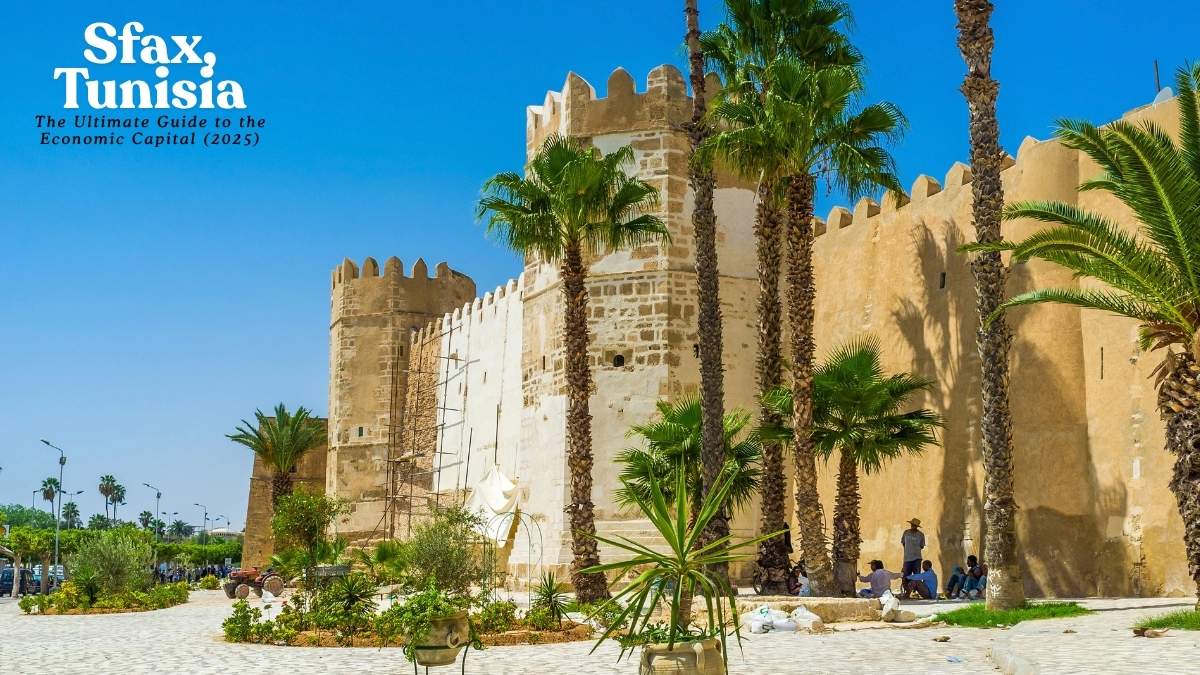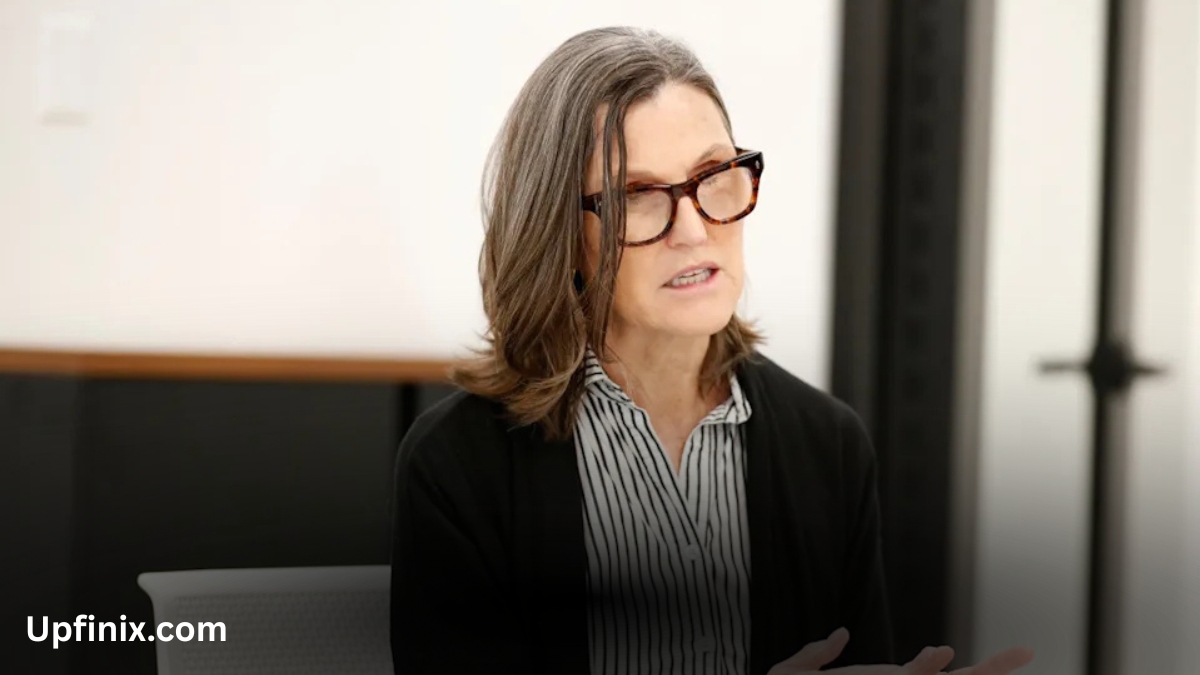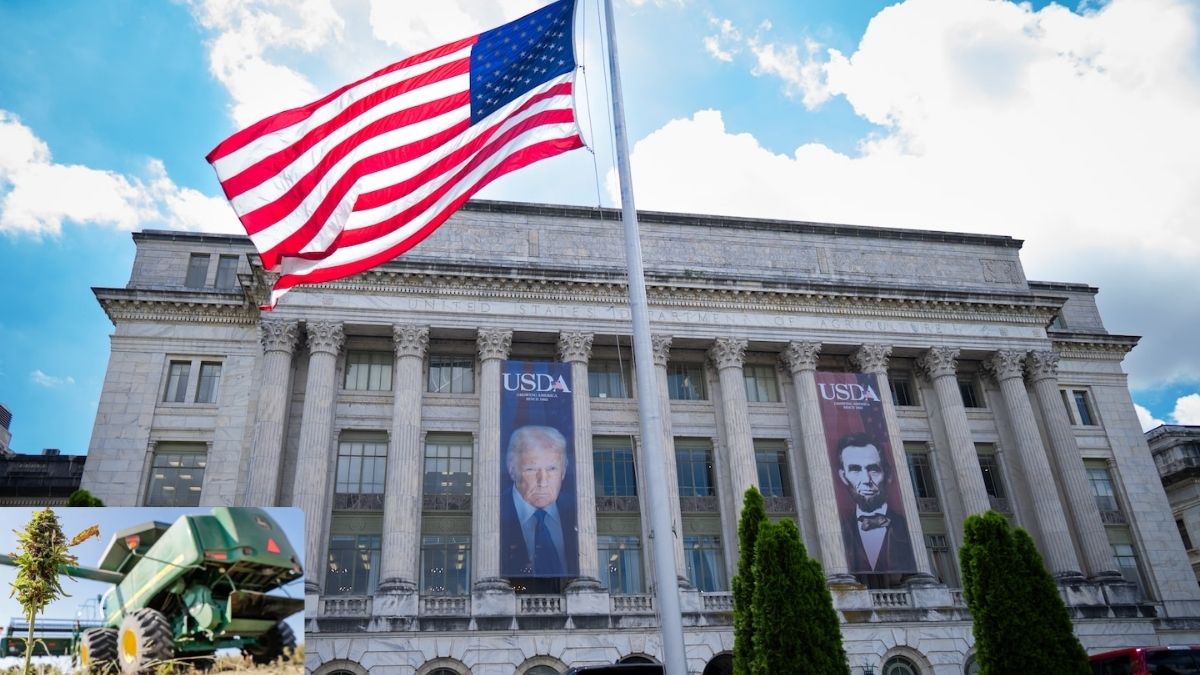Often overshadowed by the sun-drenched resorts of the Cap Bon peninsula or the ancient grandeur of Carthage, Sfax presents a different, more complex face of Tunisia. Located 270 km (170 mi) southeast of Tunis, this bustling port city is widely acknowledged as the nation’s “economic capital”. Its identity is deeply intertwined with its sprawling port, its vast olive groves, and the hum of its factories. Yet, this very industrial character, which places it “at a distance from the typical tourist itineraries,” has inadvertently preserved one of the country’s most authentic and compelling cultural landscapes.
While business travelers have long frequented its modern hotels, Sfax has remained largely untouched by the mass tourism that has reshaped other coastal cities. The result is a destination that offers a rare, unfiltered glimpse into Tunisian urban life. Its heart is not a polished tourist plaza but a living, breathing Medina, a labyrinthine world of artisans, merchants, and residents whose daily rhythms are dictated by commerce and tradition, not by tour schedules. This article serves as the definitive guide to understanding this compelling duality. It delves into the powerful economic engines that drive the city, traces its rich historical arc, explores its vibrant cultural core, and provides a practical, nuanced guide for the modern traveler. For those willing to look beyond the industrial shoreline, Sfax reveals itself as a city of profound depth, where a robust work ethic and a deep-seated heritage are not just parallel narratives but two sides of the same Sfaxian coin.
| Metric | Data |
| Population | ~341,999 (City, 2022), ~955,421 (Governorate, 2014) |
| Location | 270 km (170 mi) southeast of Tunis, on the Mediterranean coast |
| Climate | Hot semi-arid (Köppen BSh) |
| Key Industries | Phosphate processing, Olive Oil, Fishing, International Trade, Manufacturing |
| Major Landmarks | The Medina (UNESCO Nominee), Great Mosque, Dar Jellouli Museum, The Kasbah |
The industrial identity of Sfax has, in a way, acted as a cultural preservative. By not pivoting its entire economy towards tourism, the city has maintained a level of authenticity in its Medina and daily life that has become its most valuable, if understated, asset. Travelers who venture here often speak of discovering the “real deal”—a city that is not performing for visitors but is simply, powerfully, itself. This report unpacks that reality, exploring the layers of a city that is at once Tunisia’s engine room and one of its most treasured cultural strongholds.
Table of Contents
The Engine of Tunisia: Unpacking the Economy of Sfax
The economy of Sfax is a dynamic and multifaceted engine that has powered much of Tunisia’s national commerce for over a century. Since the 1960s, the region has undergone a significant transformation, diversifying from a traditional reliance on its “big three”—olive oil, fishing, and phosphates—into a complex ecosystem encompassing a vast industrial sector and a thriving service-based economy. Today, Sfax stands as the country’s leading exporting city, with annual exports exceeding 900 million dinars, a testament to its pivotal role in the national economy.
The industrial landscape is formidable, with approximately 2,300 industrial units providing employment for a quarter of the active population. These businesses are spread across numerous dedicated zones such as Poudrière, Madagascar, Skhira, and Sidi Salem, hosting a wide array of enterprises from manufacturing to the naval industry. Complementing this is a robust tertiary sector, particularly in commerce and trade, which sustains around 100,000 jobs. At the heart of this entire economic apparatus is the city’s port, the central nervous system that connects every sector to the wider world.
The Port of Sfax: A Gateway to the Mediterranean
The Port of Sfax is more than just a piece of infrastructure; it is the physical embodiment of the city’s economic history and its future ambitions. As one of the oldest and most active commercial harbors in Tunisia, it serves as the primary conduit for the region’s wealth. With an impressive capacity to handle 4.9 million tons of goods annually and welcome over 1,300 ships, the port is a critical hub for Tunisia’s most important exports, including phosphates, olive oil, and seafood.
Its strategic location on a key Mediterranean shipping route makes it an ideal stop for vessels connecting Europe, Africa, and the Middle East. The port complex offers extensive logistical support, including advanced warehousing facilities and efficient ship supply services, which are crucial for maintaining the seamless flow of international trade. The performance and modernization of the port are directly tied to the success of every other key industry in the region. The nearby Port of Skhira further enhances the region’s strategic importance, specializing in hydrocarbons and handling an estimated 55% of Tunisia’s total traffic in that sector. The entire economic history of Sfax can be traced through the port’s development—from the railway built to export phosphates to the modern container ships carrying branded olive oil, the port is where Sfax meets the world.
Liquid Gold: The Sfaxian Olive Oil Empire
Sfax is unequivocally the “Olive Capital” of Tunisia, a title earned through centuries of cultivation and a landscape dominated by an estimated 8 million olive trees, which represent 20% of the national total. The region is responsible for an astounding 40% of Tunisia’s olive oil exports and is home to 346 oil mills, forming the backbone of its agricultural economy.
The predominant local olive variety is the Chemlali, which thrives in the hot, arid climate of central and southern Tunisia. It produces a characteristically mild and fruity oil that is highly versatile and accounts for over 80% of the country’s total production. In recent decades, Sfax has also become a leader in the global organic olive oil market, with its groves comprising 22% of Tunisia’s total organic olive cultivation area. The quality is exceptionally high, with an estimated 70-80% of Tunisian oil qualifying as extra-virgin.
Despite its dominance, the sector faces significant challenges. It has long been dependent on bulk exports, primarily to Italy and Spain, where the high-quality Tunisian oil is often blended and rebranded under European labels. This practice captures less value for Tunisian producers. Furthermore, the industry grapples with high volatility in production, low productivity rates due to aging groves and a lack of modern irrigation, and the ever-increasing threat of drought exacerbated by climate change.
In response, a concerted push is underway to move up the value chain. Exports of bottled and branded Tunisian olive oil have seen a dramatic increase, rising from just 1,900 tons in the 2006/07 season to 22,000 tons by 2015/16. Innovative initiatives like the “Sfax Oléo Tour” are being developed to promote oleotourism, inviting visitors to explore the olive groves, visit mills, and experience the region’s rich culinary heritage firsthand, creating a new, sustainable revenue stream linked directly to the region’s identity.
Suggested Visual: Photo gallery showing the vast olive groves of the Sfax region, traditional harvesting, a modern oil mill, and bottles of premium Sfaxian olive oil.
Bounty of the Sea: The Fishing and Aquaculture Sector
As Tunisia’s largest fishing port, Sfax is the undisputed center of the nation’s seafood industry. The city’s fleet of over 4,200 fishing boats lands 18% of the national seafood production, but its real dominance lies in trade, accounting for a remarkable 60% of Tunisia’s total seafood exports. The bustling fish market in the Medina is a vibrant testament to this maritime culture, where locals and chefs seek out the freshest catch of the day.
A short ferry ride from Sfax lie the Kerkennah Islands, an archipelago with a unique and ancient fishing culture. The islanders are renowned for their practice of “Charfia” fishing, a sustainable, passive method that uses thousands of palm fronds arranged in the shallow waters to create fixed mazes that guide fish into capture chambers. This traditional technique, passed down through generations, respects marine life cycles and is recognized as part of Tunisia’s intangible cultural heritage.
However, this delicate ecosystem and the livelihoods dependent on it are under severe threat. The primary danger comes from illegal and highly destructive bottom trawling, known locally as ‘kiss’ trawling. These nets drag along the seabed, indiscriminately catching all marine life and, most critically, destroying the vital Posidonia seagrass meadows. These meadows are often called the “nursery of the Mediterranean,” as they are essential breeding grounds for countless fish species and play a crucial role in carbon sequestration. The conflict between the sustainable Charfia tradition and the rapaciousness of illegal trawling represents a critical battle for the future of the region’s marine environment. Alongside traditional fishing, aquaculture is an emerging sector with significant growth potential, producing species like sea bream and sea bass for both European export markets and domestic consumption in Tunisia’s major cities.
Suggested Visual: Video clip showing the bustling fish market in the Sfax Medina and the unique Charfia fishing structures in the waters around Kerkennah.
Foundations of Industry: Phosphates and Manufacturing
The industrial destiny of Sfax was sealed in 1885 with the discovery of rich phosphate deposits in the nearby Gafsa region by a French geologist. To exploit this resource, the Compagnie des phosphates de Gafsa (CPG) was formed, and a railway line was constructed to connect the mines directly to the port of Sfax. This transformed the city into the primary processing and export hub for one of the world’s most important fertilizer components. For much of the 20th century, CPG was the largest employer in Tunisia and ranked as the fifth-largest phosphate producer globally, making Sfax a city of immense strategic and economic importance.
However, the post-2011 era has been tumultuous for this legacy industry. The state-owned sector has been beset by persistent social unrest, strikes, and protests demanding jobs and better conditions. These disruptions have had a devastating impact, causing production to plummet by as much as 50% and leading to the loss of key international markets. In a dramatic reversal of fortune, Tunisia was forced to import phosphates for the first time in 2019 to supply its own domestic fertilizer plants. Social concessions made in the years following the revolution saw the company’s workforce swell from 8,000 to 30,000, placing immense financial strain on an already struggling enterprise.
This situation reveals a complex dynamic at the heart of the Sfax and Tunisian economies. The crisis in the state-owned phosphate sector, driven by deep-seated social and political issues, stands in stark contrast to the more agile, private-sector-led efforts in the olive oil industry to innovate and move up the value chain. It highlights a fundamental tension between different economic models coexisting within the same city: a struggling state-led model facing profound structural challenges, an adaptive private-sector model seeking global competitiveness, and a traditional sector (fishing) caught between sustainability and unregulated exploitation.
| Sector | Key Products/Activities | National Significance | 2025 Trend/Challenge |
| Port & Logistics | Bulk/Container Shipping, Ship Supply | Gateway for key exports | Modernization vs. Regional Competition |
| Olive Oil | Chemlali & Organic Production | 40% of national exports | Shift from Bulk to Value-Added (Branding, Tourism) vs. Climate Change |
| Fishing & Aquaculture | Seafood Exports, Charfia | 60% of seafood exports | Sustainable Tradition vs. Illegal Overfishing |
| Phosphate & Mfg. | Phosphate Processing, Fertilizers | Historically vital | Post-2011 Production Crisis vs. Diversification into other manufacturing |
A Journey Through Time: The Rich History of Sfax
The story of Sfax is etched into its very foundations, a historical narrative of a city prized for its strategic location as a fortified port on the Mediterranean. Its roots run deep, with the modern city built upon the ruins of the ancient Roman settlements of Taparura and Thaenae.
The city as it is known today took shape in 849 AD under the Aghlabid dynasty. Acting on the orders of the emir in Kairouan, a defensive fortress and city walls were constructed, establishing Sfax as a key Islamic trading center and military outpost. The Great Mosque, the city’s spiritual heart, was also founded during this pivotal period, its construction marking the birth of the urban core that still exists today.
Over the subsequent centuries, Sfax’s strategic value made it a coveted prize for a succession of powers. It became a crossroads of conflict and commerce, experiencing a temporary but significant occupation by Sicilian Normans in the 12th century, followed by the Spanish in the 16th century. For a time, it also served as a formidable stronghold for the
Barbary pirates, who used its protected harbor as a base for their operations across the Mediterranean.
The city passed through the hands of the major regional dynasties, including the Fatimids, Zirids, Almohad (Unitarian), and Hafsids, before being incorporated into the Ottoman Empire. Each era left its indelible mark, particularly on the city’s architecture. The Zirids, for instance, undertook significant modifications to the Great Mosque, encasing its original minaret in a grander structure and embellishing its eastern facade.
The modern era brought further transformation. The city experienced a major population explosion during the Al-Husayni era. The arrival of the French Protectorate in 1881 was met with violent resistance from the people of Sfax, and the city’s leaders would later play a prominent role in the national struggle for Tunisia’s independence, cementing its reputation as a city of proud and resilient character.
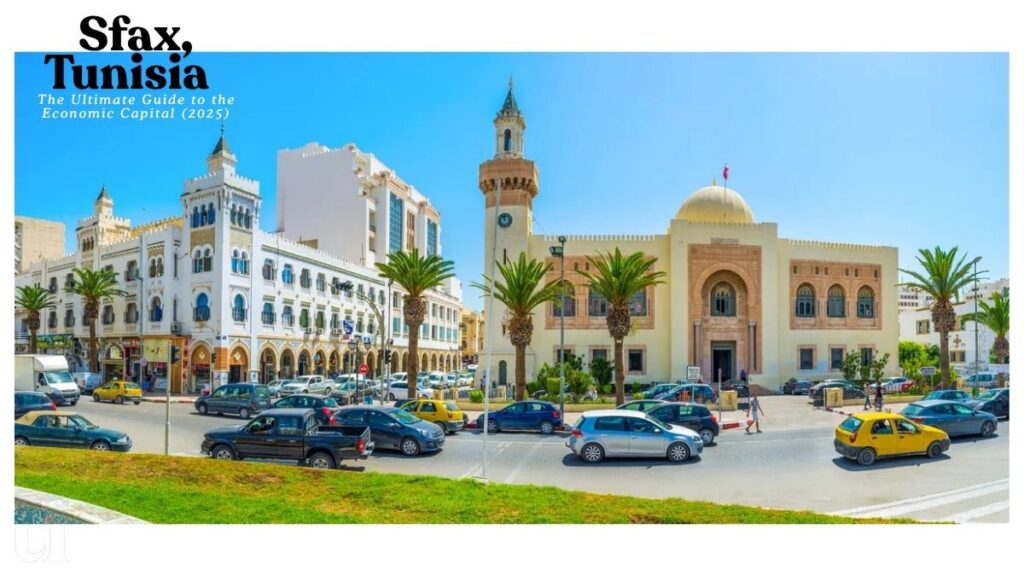
The Authentic Heart: Exploring the Culture and Attractions of Sfax
Sfax offers a cultural experience that is deeply authentic and refreshingly devoid of the artifice often found in major tourist hubs. It is a city for the traveler who seeks immersion over spectacle, a place where culture is not merely displayed in museums but is lived out loud in the bustling souks, savored in its unique cuisine, and preserved within the ancient walls of its magnificent Medina.
The Medina of Sfax: A Living UNESCO Treasure
The Medina of Sfax is the city’s soul, a sprawling, 24-hectare quadrilateral of history that stands as one of the most remarkably preserved examples of Arab-Muslim urban planning in the entire Mediterranean basin. In recognition of its outstanding universal value, it was submitted for inclusion on the UNESCO World Heritage list in 2012.
Its most striking feature is its monumental defensive walls. Stretching for nearly three kilometers, these parchment-colored ramparts stand between seven and eleven meters high and are punctuated by 67 imposing towers of various shapes. Entry into this ancient city is through its historic gates, most notably the grand
Bab Diwan (the Sea Gate) on the southern side and Bab Jebli (the Northern Gate), which still serves as a vibrant gateway to the city’s main vegetable market.
What truly sets the Sfax Medina apart is its vitality. Unlike many historic quarters that have been transformed into open-air museums or tourist-centric shopping districts, the Medina of Sfax remains a thriving residential and commercial hub for its citizens. Its narrow, winding alleyways are a hive of activity, home to over 30 specialized
souks (markets) where artisans practice age-old crafts. One can wander through the Souk Haddadine (the blacksmiths’ market), the Souk El Kach (the junk market), and the Souk Erbaa, once the center of wool and chechia trading and now a place to find traditional clothing.
Within the Medina’s walls lies the Kasbah, a formidable fortress dating back to the 12th century. Located in the southwest corner, it originally served as a watchtower and military barracks. Today, it has been repurposed to house a fascinating museum dedicated to traditional architecture, offering insights into the construction techniques that have allowed the Medina to endure for centuries.
Suggested Visual: A photo essay of the Medina, capturing the grandeur of the walls, the intricate details of Bab Diwan, the narrow, bustling alleyways of the souks, and candid shots of artisans at work.
Landmarks of Faith and Heritage
The Great Mosque of Sfax: Dominating the center of the Medina, the Great Mosque is the city’s principal religious monument, founded in 849 AD shortly after the city itself. Its architecture is a palimpsest of the city’s history, showcasing styles from different eras. The imposing square minaret, with its refined decorative bands and Kufic inscriptions, is a masterpiece of the Zirid period (11th century). The mosque’s eastern facade is particularly noteworthy for its unique decorative scheme of recessed arches, a feature that distinguishes it from other Ifriqiyan mosques. While non-Muslims are generally not permitted to enter the main prayer hall, the grandeur of the building can be appreciated from its arcaded courtyard and the surrounding streets.
Dar Jellouli Museum: Tucked away in the Medina is the Dar Jellouli, a magnificent 17th-century aristocratic mansion that now serves as the Regional Museum of Arts and Folk Traditions. The building itself is arguably the main exhibit. Behind a modest facade lies a stunning classical Tunisian house centered around a square courtyard. The space is adorned with exquisite decorative details, including richly colored ceramic tiles, intricately carved stucco, and ornate wooden panels. The museum’s exhibits bring the past to life, with rooms dedicated to reconstructing scenes from 18th-century Sfaxian daily life, displaying traditional costumes, beautiful jewelry, and works of art.
Suggested Visual: Close-up architectural photos of the Great Mosque’s minaret and eastern facade 11 and the ornate courtyard of the Dar Jellouli Museum.
A Taste of Sfax: A Culinary Exploration
The gastronomy of Sfax is a rich and distinctive tradition built upon the pillars of the regional economy: seafood, olive oil, and almonds. The city’s cuisine is renowned throughout Tunisia for its unique flavors and high quality.
The star of Sfaxian cuisine is undoubtedly its seafood. Signature dishes include fish couscous and stuffed squid, but the most iconic local preparation is fish served with “charmoula.” This is not the herby green sauce found elsewhere but a complex, slow-simmered relish made from onions, raisins, and spices like cinnamon, creating a perfect sweet-and-savory accompaniment to the fresh fish. The central fish market is the epicenter of this culinary culture, a must-visit for anyone wanting to understand the city’s deep connection to the sea.
Sfax is also widely considered to be the capital of Tunisian pastry-making. Its confectioners produce delicate and fragrant sweets that are unparalleled elsewhere in the country. Must-try specialties include kaak warqa (delicate rings flavored with rosewater), flaky, almond-filled samsa, and mlabess, a confection subtly perfumed with orange peel. Locals often recommend specific patisseries by name, such as those run by Mme Rim Guermazi and Mme Rekik, highlighting the personal pride and artistry involved in their creation.
Suggested Visual: A vibrant photo collage of Sfaxian food: a plate of fish with charmoula, fresh seafood at the market, and a tray of assorted Sfaxian pastries.
The Kerkennah Islands: An Idyllic Escape
Just 20 kilometers off the coast of Sfax lies the Kerkennah Islands, an archipelago that offers a tranquil counterpoint to the city’s industrial energy. Accessible via a frequent ferry service that makes up to eight trips a day, the islands are a world away from the mainland’s hustle and bustle.
Characterized by their low-lying, arid landscapes, swaying palm trees, and long stretches of sandy coastline, the Kerkennah Islands are a haven of serenity. The local culture is deeply rooted in artisanal fishing, most famously the traditional “Charfia” method. The islands have largely escaped large-scale tourism development and are a popular holiday destination for Tunisians, many of whom have second homes there. This gives Kerkennah a quiet, authentic charm that is increasingly rare in Mediterranean island destinations.
Beyond their peaceful beaches, the islands are an ecological treasure. They are designated as an Important Bird Area by BirdLife International, serving as a critical stopover and wintering ground for vast numbers of migratory birds on their journey across the Mediterranean. However, this fragile paradise faces serious environmental threats, including the impacts of climate change, such as rising sea levels and increasing aridity, and the ecological damage caused by illegal fishing practices in the surrounding waters.
Suggested Visual: Panoramic photos of the Kerkennah beaches at sunset, traditional fishing boats, and the unique Charfia fishing structures.
The Sfax Visitor’s Guide: Planning Your 2025 Trip
This section provides practical, data-driven advice for travelers planning a visit to Sfax. It aims to offer a balanced and trustworthy guide to logistics, safety, and timing, helping visitors make the most of their trip to this unique Tunisian city.
Is Sfax Safe for Tourists? A Nuanced Look at Travel in 2025
The question of safety is paramount for any traveler. When it comes to Sfax, it is important to distinguish between broad national advisories and the specific on-the-ground reality.
Official government travel advisories from countries like the UK, Australia, and Canada typically recommend exercising “a high degree of caution” for Tunisia as a whole. These warnings are primarily due to the ongoing threat of terrorism and the potential for civil unrest. The advisories strongly caution against all travel to remote border regions, such as the Chaambi Mountains near Algeria and the southern desert areas bordering Libya, due to documented security operations and cross-border threats. It is crucial to note that Sfax is located far from these high-risk zones.
Tunisia has been under a state of emergency since 2015, which grants security forces extensive powers to maintain order. As in any large city, petty crimes like pickpocketing can occur, and travelers should exercise standard precautions.
However, there is a notable divergence between these official, risk-averse warnings and the wealth of recent, first-hand accounts from independent travelers, bloggers, and vloggers. The overwhelming consensus from those who have actually visited Sfax is that the city is exceptionally friendly, safe, and welcoming. Many describe being pleasantly surprised by the genuine warmth and hospitality of the Sfaxian people, often contrasting it favorably with more tourist-heavy destinations. A responsible approach for any visitor is to be aware of the official national advisories, avoid large demonstrations, and exercise common sense, while also understanding that the daily reality in Sfax is widely reported to be safe and positive.
Getting There and Around: Your Transportation Guide
Sfax is well-connected to the rest of Tunisia, making it an accessible destination and a convenient base for exploring the central and southern parts of the country.
Inter-city Travel:
- By Road: A modern highway links Sfax directly with Tunis, Sousse, and other northern cities. Driving offers flexibility for exploring the region.
- By Bus: The national bus company, SNTRI, operates comfortable, air-conditioned buses from its dedicated station. The journey to Tunis is swift, taking approximately 2 hours and 43 minutes. This is often the fastest public transport option.
- By Train: The Tunisian national railway, SNCFT, connects Sfax to major cities. The train journey to Tunis is more scenic but slower, taking around 4.5 hours. It is, however, the most budget-friendly option. Trains offer three classes of travel: 2nd, 1st, and “Confort,” with the latter being highly recommended for its guaranteed seating.
- By Louage: These shared, nine-passenger minibuses are a very popular and efficient mode of transport in Tunisia. They are faster than the train and depart from a dedicated station as soon as they are full. For popular routes like Sfax to Tunis, the wait is typically short.
- By Air: The Sfax-Thyna International Airport (SFA) offers a limited number of domestic and international flights, including connections to Paris and Tripoli.
| Mode | Destination (Tunis) | Avg. Duration | Avg. Cost (USD) | Notes |
| Bus (SNTRI) | ~2.5-3 hours | ~$13–$18 | Fast and comfortable | |
| Train (SNCFT) | ~4.5 hours | ~$5–$6 | Cheapest option, scenic | |
| Louage | ~3 hours | ~$8–$10 (Est.) | Fastest road option, departs when full | |
| Car (Drive) | ~3 hours | ~$19–$27 (fuel) | Offers flexibility |
Local Transportation:
Within Sfax, taxis are the most convenient and economical way to get around. They are plentiful, and fares are very low; a ride within the downtown area or between the Medina and the main hotels should cost less than 2 Tunisian Dinars (DT).53 While local buses exist, they are often crowded and follow irregular schedules, making them less practical for most visitors.
Where to Stay: Accommodation in Sfax
Sfax’s accommodation landscape primarily caters to business travelers, but this translates to a good selection of modern, well-equipped hotels that are perfectly suitable for tourists.
- Luxury & High-End (4-5 Star): For those seeking premium comfort and amenities, top choices include the Radisson Hotel Sfax, Les Oliviers Palace, Borj Dhiafa, and the Movenpick Hotel Sfax. These hotels typically offer features like swimming pools, spas, and multiple dining options.
- Mid-Range (3 Star): Excellent value and comfort can be found at hotels like the ibis Sfax, Concorde Sfax Centre, and the Pacha Hotel. These are popular choices known for their clean facilities and convenient locations.
- Budget: For travelers on a tighter budget, the Hotel El Layeli offers basic but clean accommodation in a great location near the port and the Medina, making it a practical base for exploration.
According to booking data, hotel rates in Sfax are subject to seasonal variation. The most affordable month to book a hotel is typically October, while the peak season with the highest prices falls in June and July.
Best Time to Visit Sfax
The ideal time to visit Sfax depends largely on your planned activities.
- For Hot Weather, Beaches, and the Kerkennah Islands: The period from early June to mid-September is the best time for a visit. During these months, the weather is hot and sunny, with clear skies perfect for enjoying the coastal areas. August is the hottest month, with average high temperatures reaching 31°C (89°F).
- For Sightseeing and Medina Exploration: The shoulder seasons of Spring (March to May) and Autumn (October to November) are arguably the most pleasant times to visit. The temperatures are mild and comfortable for walking around the city, exploring the Medina’s narrow alleyways, and taking day trips to nearby sites like the amphitheater at El Jem. These periods also see fewer crowds than the summer peak.
Bonus: Pros & Cons of Visiting Sfax
| Pros (The Authentic Experience) | Cons (The Industrial Reality) |
| Atmosphere: Raw, authentic, vibrant, and refreshingly free of tourist traps. A true immersion in modern Tunisian urban life. | Can feel gritty, industrial, and lacks the polished, resort-like feel of other coastal cities. |
| Attractions: A stunning, living Medina (UNESCO nominee), excellent and uncrowded museums like Dar Jellouli and the Kasbah. | Fewer “blockbuster” tourist sights compared to the historical depth of Tunis or the Roman ruins scattered elsewhere. |
| Food: An exceptional and unique regional cuisine, considered among the best in Tunisia, especially for seafood and pastries. | Fewer international dining options and tourist-oriented restaurants compared to major tourism hubs. |
| People: Widely reported by travelers to be incredibly friendly, welcoming, and genuine, offering sincere interactions. | Less English is spoken outside of major hotels compared to dedicated tourist zones; some French or basic Arabic is helpful. |
| Location: An excellent and convenient base for exploring key attractions like the El Jem amphitheater, the Kerkennah Islands, and the south of Tunisia. | It is not a beach resort city itself; the coastline is primarily industrial and port-focused. |
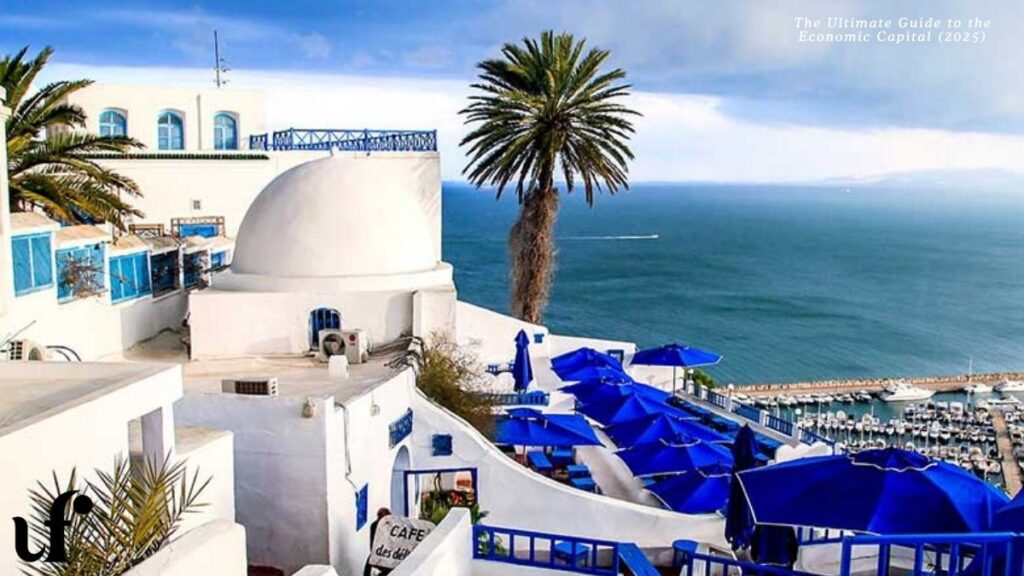
Sfax in 2025 and Beyond: Development and Challenges
Sfax stands at a critical juncture, grappling with the legacy of its industrial past while investing in a more sustainable and resilient future. The city’s primary challenges and most ambitious development projects are two sides of the same coin, both born from the intense pressure that its economic growth has placed on a fragile, arid environment.
Quenching a Thirst for Growth: The Sfax Desalination Plant
For years, the Sfax governorate has faced a severe and worsening water deficit, a direct consequence of its large population and water-intensive agricultural and industrial activities outstripping the region’s natural supply. In response, one of the most significant infrastructure projects in modern Tunisia is nearing completion: the
Sfax Seawater Desalination Plant.
Located in the community of Gargour, about 20 km south of the city, this massive facility is a technological solution to an existential problem. Constructed by a consortium of international firms including Tedagua, Orascom Construction, and Metito, and primarily financed by a loan from the Japan International Cooperation Agency (JICA), the plant is designed to secure the region’s water supply for the foreseeable future.
As of early 2025, the project has reached a key milestone. Construction was largely completed in late 2024, and the plant has entered a two-year operation and maintenance phase under the management of the construction consortium. It is expected to be fully operational and formally transferred to Tunisia’s national water utility, SONEDE, by early 2026. With an initial production capacity of 100,000 cubic meters of potable water per day—expandable to 200,000—the plant will be able to supply fresh water to over 600,000 inhabitants, definitively ending the era of chronic water shortages and enabling sustainable socioeconomic development for the region.
The Environmental Crossroads: A City’s Struggle with Waste
While the desalination plant represents a proactive solution to resource scarcity, Sfax has also been forced to react to a profound environmental crisis of its own making: waste management. For years, the city has struggled with the byproducts of its own success, leading to a situation that became critical in late 2021.
The crisis erupted when the region’s main landfill, located in the town of Agareb, was forced to close following sustained protests by local residents. Activists and citizens denounced the disastrous environmental and health impacts of the site, which was allegedly receiving illegal toxic and medical waste, contaminating the water supply, and operating without the promised recycling facilities. The closure, without an immediate alternative, led to a “catastrophic” public health emergency as thousands of tons of garbage piled up on the streets of Sfax, near hospitals, schools, and homes.
This event laid bare a systemic failure rooted in decades of mismanagement, government neglect, and alleged corruption within the national waste management agencies. With more than half of Tunisia’s landfills already at or beyond capacity, the Sfax crisis was a symptom of a national problem. The situation has galvanized a powerful local environmental movement, with campaigns like
“Manish Msab” (I am not a landfill) demanding accountability and sustainable solutions, fundamentally challenging the state’s approach to environmental governance.
The desalination plant and the waste crisis are inextricably linked. They are the direct consequences of a century of industrial and agricultural development in an environment with limited carrying capacity. One is a high-tech, forward-looking investment to secure a vital resource, while the other is a social and political firestorm ignited by the failure to manage the negative externalities of that same development. Together, they define the central challenge for Sfax’s next generation: how to reconcile its powerful economic legacy with the urgent need for a sustainable and healthy future.
Looking Forward: New Projects for a Resilient Future
Beyond these two major issues, development efforts continue on a smaller scale. On the Kerkennah Islands, 2025 has seen the launch of several strategic projects aimed at boosting the local economy and quality of life. These include a new public lighting project, the establishment of the island’s first community-based enterprise to create local jobs, upgrades to digital and telecommunications infrastructure by Tunisie Telecom, and improvements to administrative and healthcare facilities to better serve the island’s population. These initiatives reflect a broader strategy to build a more resilient and prosperous future for the entire Sfax region.
Frequently Asked Questions (FAQ) about Sfax
1. What is Sfax, Tunisia known for?
Sfax, Tunisia is primarily known as the country’s undisputed economic and industrial capital. Located on the Mediterranean coast 270 km southeast of Tunis, it is the nation’s second-most populous city and home to one of its largest and most active commercial ports. The city’s economy is historically built on four key pillars that continue to define its identity. Firstly, it is the center of Tunisia’s
olive oil industry, earning it the nickname the “Olive Capital.” The region’s vast groves, home to millions of Chemlali olive trees, produce a staggering 40% of the country’s olive oil exports, including a significant and growing share of high-quality organic oil.
Secondly, Sfax is the heart of Tunisia’s fishing industry. It boasts the largest fishing port in the country, and its fleet is responsible for 18% of the national seafood catch and an overwhelming 60% of all seafood exports. The nearby Kerkennah Islands add to this maritime heritage with their unique and sustainable “Charfia” fishing tradition. Thirdly, the city has a long history with the
phosphate industry. Since the late 19th century, it has served as the main processing and export hub for phosphates mined in the interior Gafsa region, a sector that was once a cornerstone of the national economy.
Beyond its industrial prowess, Sfax is known for possessing one of Tunisia’s most authentic and well-preserved cultural treasures: its Medina. This sprawling walled old city, founded in 849 AD, is a candidate for the UNESCO World Heritage list due to its exceptional state of preservation and its classic Arab-Muslim urban layout. Unlike more tourist-oriented medinas, the one in Sfax remains a vibrant, living center of commerce and daily life for its residents, offering visitors a truly unfiltered cultural experience.
2. Is Sfax worth visiting for tourists?
Yes, Sfax is absolutely worth visiting, but it appeals to a specific type of traveler. While it is not a conventional tourist destination like the beach resorts of Hammamet or Sousse, its lack of mass tourism is precisely its greatest strength for those seeking an authentic and immersive cultural experience. The primary reason to visit Sfax is to explore its magnificent
Medina, a UNESCO-nominated site that is not a manicured tourist park but a living, breathing city within a city. Wandering its narrow alleyways, discovering its bustling souks filled with artisans, and admiring its formidable ancient walls offers a genuine glimpse into Tunisian urban life that is hard to find elsewhere.
The city also boasts several high-quality cultural attractions. The Dar Jellouli Museum, a stunning 17th-century mansion, is a must-see for its beautiful architecture and exhibits on traditional Sfaxian life.
The Great Mosque is an architectural landmark, and the Kasbah Museum provides fascinating insights into the region’s history and architecture. Furthermore, Sfax is a paradise for food lovers. It is renowned for having some of the best and most distinctive cuisine in Tunisia, with an emphasis on incredible seafood dishes like fish with charmoula and what many consider to be the country’s finest pastries.
Finally, Sfax serves as an excellent and practical base for exploring the surrounding region. It is the departure point for the tranquil Kerkennah Islands and is within easy reach of the spectacular Roman amphitheater at El Jem, one of Tunisia’s premier historical sites. Travelers should be aware that Sfax is an industrial port city; it is gritty, energetic, and lacks the polished veneer of a resort town. However, for those who value authenticity, incredible food, friendly people, and a destination that feels real, Sfax is an immensely rewarding place to visit.
3. How do you get from Tunis to Sfax?
Traveling from Tunis to Sfax is straightforward, with several reliable and affordable options available to suit different budgets and schedules. The distance between the two cities is approximately 270 km.
The most popular and often fastest option is the SNTRI bus. These are modern, comfortable, air-conditioned coaches that travel directly between the two cities via the A1 highway. The journey takes around 2 hours and 43 minutes, making it a very efficient choice. Buses depart several times a day from the main SNTRI bus station in Tunis and arrive at the corresponding station in Sfax. Tickets are reasonably priced, typically costing between $13 and $18 USD.
For a more budget-friendly journey, the train is an excellent alternative. Operated by the national railway company, SNCFT, trains run between Tunis Ville station and Sfax several times a day. While the journey is longer, taking approximately 4 hours and 27 minutes, it is significantly cheaper, with tickets costing around $5 to $6 USD. The train ride offers a chance to see the Tunisian countryside. It is advisable to book a “Confort” or 1st class ticket for a more comfortable experience, especially on crowded services, as these guarantee a reserved seat.
A third popular option is the louage, or shared taxi. These nine-passenger minibuses are a staple of Tunisian transport and offer a balance of speed and cost. They depart from dedicated louage stations in both cities and leave as soon as they are full. For a major route like Tunis-Sfax, the wait time is usually minimal. The journey time is comparable to driving a private car, around 3 hours, and the cost is generally between that of the train and the SNTRI bus. This option is favored by many locals for its speed and convenience. Lastly, one can drive, with the journey taking about 3 hours along the well-maintained highway.
4. What are the main industries in Sfax?
Sfax has a highly diversified and powerful economy, solidifying its status as Tunisia’s industrial and commercial hub. The main industries can be categorized into several key sectors that are deeply interconnected, often revolving around the city’s strategic port.
The Port and Logistics sector is the central nervous system of the Sfaxian economy. The Port of Sfax is one of the country’s largest, handling millions of tons of goods annually and serving as the primary export gateway for the region’s products. It is supported by a robust ecosystem of logistics, warehousing, and ship supply companies.
The Olive Oil industry is a cornerstone of the regional identity and economy. Known as the “Olive Capital,” Sfax is responsible for 40% of Tunisia’s olive oil exports. The area is home to 8 million olive trees and hundreds of oil mills. While historically focused on bulk exports, the industry is increasingly shifting towards higher-value products, including premium bottled extra-virgin and certified organic olive oils, as well as developing oleotourism.
The Fishing and Seafood Processing industry is another dominant sector. Sfax is the largest fishing port in Tunisia and accounts for an incredible 60% of the nation’s seafood exports. This includes fresh and frozen fish, cephalopods like octopus and squid, and various processed seafood products that are shipped to markets worldwide, particularly in Europe. An emerging aquaculture sector is also adding to this output.
Finally, the Phosphate Processing and Manufacturing sector has a long and significant history. The city became the main hub for processing and exporting phosphates mined in Gafsa, which are used to produce phosphoric acid and fertilizers. While this state-owned industry has faced severe challenges and production declines since 2011, Sfax remains a major center for chemical industries. Beyond phosphates, the city has a broad manufacturing base with over 2,300 industrial units engaged in sectors like textiles, food processing, and mechanical and naval industries.
5. What is the significance of the Medina of Sfax?
The Medina of Sfax holds immense historical, architectural, and cultural significance, making it one of the most important historic urban centers in North Africa. Its primary significance lies in its exceptional state of preservation and authenticity. Founded in 849 AD by the Aghlabid dynasty, the Medina retains its original 9th-century urban plan, which is considered a quintessential example of Arab-Muslim city planning. This remarkable integrity was a key reason for its nomination to the UNESCO World Heritage list in 2012.
Architecturally, the Medina is defined by its formidable defensive walls. These massive ramparts, stretching nearly 3 kilometers and fortified with dozens of towers, have protected the city for centuries and remain almost entirely intact. The grand gates, such as Bab Diwan and Bab Jebli, are not just historical monuments but continue to function as the main arteries into the old city. Within the walls, the urban fabric is organized around the Great Mosque, the city’s spiritual anchor, with a network of souks (markets) radiating outwards, followed by residential quarters. This layout, reminiscent of the early Islamic city of Kufa, is a living textbook of medieval urban design.
Culturally, the Medina’s significance comes from the fact that it is a living city, not a sterilized tourist attraction. Unlike many other famous medinas that have become dominated by souvenir shops and hotels, the Medina of Sfax is still the vibrant heart of the city for its residents. Its souks are workplaces for thousands of artisans and merchants, its homes are inhabited by Sfaxian families, and its mosques are active centers of community life. For a visitor, this means experiencing an authentic environment where the rhythms of daily life have continued, in many ways, for centuries. It offers a rare and valuable window into a traditional urban culture that is both enduring and dynamic.
Conclusion: The Enduring and Evolving Spirit of Sfax
Sfax is a city of compelling and instructive dualities. It is at once Tunisia’s undisputed economic engine and the guardian of one of its most authentic cultural souls. It is a place where the gritty reality of a Mediterranean industrial port coexists with the timeless grace of a medieval Medina; where the global commerce of olive oil and phosphates unfolds just steps away from the local clamor of the fish market and the blacksmith’s forge. This is not a city of simple narratives but one of rich, overlapping layers.
The analysis reveals a city in constant motion, shaped by its history but not trapped by it. Its economy is a microcosm of modern Tunisia’s broader challenges and opportunities—a struggling state-owned legacy sector in phosphates, a dynamic private olive oil industry pushing for global recognition, and a traditional fishing culture fighting for survival against unregulated exploitation. The very challenges that define its future—the urgent need for fresh water leading to the monumental desalination plant and the profound environmental crisis born from decades of industrial waste—are the direct consequences of the city’s relentless drive.
For the traveler, Sfax offers something increasingly rare: authenticity. It does not perform for visitors. Instead, it invites them to witness a real, working Tunisian city in all its complexity. To walk through the gates of its UNESCO-nominated Medina is to step into a world that is at once ancient and vibrantly alive. To taste its unique cuisine is to understand the deep connection between its land, its sea, and its people. Sfax may not be the Tunisia of the tourist brochures, but it offers an unfiltered and deeply rewarding window into the nation’s true heart. It is a city that is enduring, evolving, and essential for anyone seeking to understand the real Tunisia.
